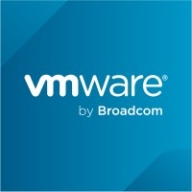

Azure Stack and VMware Cloud Foundation compete in the private cloud infrastructure category, with Azure Stack having the upper hand in hybrid flexibility and Microsoft product integration, whereas VMware leads in automation and standardization.
Features: Azure Stack offers seamless PaaS and IaaS integration, compatibility with Microsoft SQL services, and IoT capabilities, enhancing hybrid cloud environments. It also integrates smoothly with Microsoft's ecosystems, providing flexibility in hybrid models. VMware Cloud Foundation automates workload management, simplifies complex virtualization tasks, and provides comprehensive lifecycle management, ensuring robust interoperability and standardization.
Room for Improvement: Azure Stack could benefit from better third-party integrations, enhanced container support, and improved disaster recovery options. It also needs better network integration and pricing transparency. VMware Cloud Foundation's deployment complexity and integration challenge users. Improvements in pricing, licensing models, streamlined upgrade processes, and customer support documentation are needed.
Ease of Deployment and Customer Service: Azure Stack can be deployed on-premises and in hybrid cloud setups but receives mixed reviews regarding customer support efficiency. VMware Cloud Foundation offers automated and stable deployment but is complex to deploy. Both solutions need to enhance customer service quality, as Azure Stack users experience varied support and VMware customers seek improved technical assistance.
Pricing and ROI: Azure Stack is considered costly with a complex licensing model, offering good ROI when integrated with Microsoft ecosystems. Some organizations report significant returns through resource utilization. VMware Cloud Foundation is expensive but provides extensive features, with higher licensing costs impacting customer satisfaction since post-acquisition price increases.
VMware Cloud Foundation allows cost and time savings by quickly deploying infrastructure requests and integrating automatic ticketing and backup services.
In terms of ROI, although VMware Cloud Foundation is expensive, it saves time in most cases, which indirectly saves costs for users.
The technicians handling the tickets do not seem very technical.
Any support we receive is through Dell EMC, as that's a policy from Microsoft itself.
There are times when support is unclear, and even VMware support personnel may lack familiarity with certain parts, causing difficulties.
Based on my nine years of experience with VMware, I would evaluate their technical support as effective.
The technical support from VMware Cloud Foundation deserves a nine out of ten rating.
Monitoring, changing plans, and consolidating things are necessary parts of the process to avoid excessive costs.
Our company seeks cost-effective and more flexible open systems, and we find it difficult to integrate with third-party hardware.
On a scale of one to ten, I would rate the scalability of Azure Stack as eight.
When more hosts are added, performance goes slow.
VMware Cloud Foundation supports scalability and company growth.
VMware Cloud Foundation is quite scalable, receiving a rating of eight and a half to nine out of ten.
The stability of VMware Cloud Foundation is very high.
If one component fails to operate in a timely manner, the entire infrastructure can go down because everything is interconnected.
I am currently satisfied with the stability of VMware Cloud Foundation, though having started only two to three months ago, I am still in the monitoring phase.
The precision of anonymous activity tracking should be improved, particularly in identifying the correct location because IP information is sometimes inaccurate.
Many resources get created in Azure Stack, and managing those resources can be challenging.
Management looks for a balanced product that utilizes existing hardware, fulfills external customer demand, and leverages the scalability of the cloud model.
VMware Broadcom needs to include auto resource allocation at the VM levels.
The maintenance cost has increased significantly, especially after Broadcom acquired VMware, with a shift from socket-based licensing to core-based licensing.
Each user needs deep knowledge of every aspect of virtualization.
If Microsoft lowers the price, more small businesses would be able to adopt the Enterprise E5 license.
The cost has become very high, especially after Broadcom's acquisition, altering the licensing model to a more expensive core-based system.
When comparing prices of both clouds, AWS is cheaper because they offer a free section for practice.
The price is quite higher than some other vendors.
They allow me to track all user activities.
I am very much impressed with Azure Stack, especially regarding security, complete compliance, data sovereignty, and data security.
We wanted to proceed with an integrated solution from the same cloud provider, so we are using Azure Stack.
The solution now offers auto-deployment of VMs.
All features of VMware Cloud Foundation are valuable to us, as it covers every industry standard protocol and requirement protocol.
VMware Cloud Foundation allows for extensive customization, aligning with our customer requirements.
| Product | Market Share (%) |
|---|---|
| Azure Stack | 22.0% |
| VMware Cloud Foundation | 18.9% |
| Other | 59.1% |


| Company Size | Count |
|---|---|
| Small Business | 32 |
| Midsize Enterprise | 13 |
| Large Enterprise | 25 |
| Company Size | Count |
|---|---|
| Small Business | 8 |
| Midsize Enterprise | 3 |
| Large Enterprise | 27 |
VMware Cloud Foundation makes it easy to deploy and run a hybrid cloud. VMware Cloud Foundation provides integrated cloud infrastructure (compute, storage, networking, and security) and cloud management services to run enterprise applications in both private and public environments.
We monitor all Hybrid Cloud Computing Platforms reviews to prevent fraudulent reviews and keep review quality high. We do not post reviews by company employees or direct competitors. We validate each review for authenticity via cross-reference with LinkedIn, and personal follow-up with the reviewer when necessary.